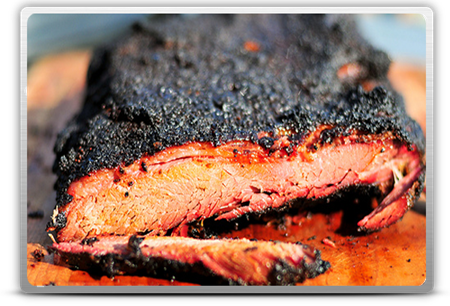The Emperor's Frou Nose
I'm Not Impressed with Agarwood
It goes by many names: aloeswood, agarwood, oud. Anyone interested in the history of incense will inevitably encounter paeans to agarwood, a substance more precious than gold. Agarwood is a fungus-infected, resinous wood so famous for its scent that pieces of it have been given proper names and titles. Agarwood has been hugely influential in Middle Eastern perfume and incense culture for thousands of years in the form of bakhoor, which modern fans still use to scent beards, clothes, the inside of cars, and hair.

When a piece of agarwood randomly floated to Japan around AD 724, its mysterious scent so beguiled the Japanese aristocracy that trade wars raged between Southeast Asian exporters and Japanese pirates. Shoguns burned miniscule pieces of it to show off their largesse and ensure loyalty from their samurai. Zen Buddhism adopted it as its primary scent, an aroma that embodied the ineffable “thusness” of the present moment. Heian Japanese aristocrats invented complicated guessing games over varieties of agarwood that are still played to this day. (I learned all of this and much, MUCH more in Michael J. Cosineau’s exhaustive The Fragrant Path: A Guide to the Japanese Art of Incense.)
With a reputation this outsized, I had to give agarwood a try. My first adventure into agarwood was Shoyeido’s Premium Incense Assortment. I burned through each sample over the course of several weeks, going from cheapest to most expensive. The first one, Friend of Pine, was immediately a favorite (because, duh: sandalwood). I still fondly remember burning that stick, as it was my very first foray into premium incense. It was so complex, like an unfolding story set within a pine forest, a distant campfire burning beyond the hills. If the lowest tier of premium was this good, I couldn’t wait to try the fancier ones! Each stick I tried included more and more agarwood, the scent becoming more complex and…savory? It was hard to compare it to any of the scents my Western mind identified as “premium,” which up to that point were largely defined by Chanel No. 5. This must be the “ineffableness” so prized by Zen, I surmised.
By the time I reached Myokaku/ Enlightenment, which was 100% agarwood, it was clear to me that the cost of the sampler (around $31.50) was really the cost of just that one final stick, a box of which cost a whopping $850! This shit better be good, I thought. I lit the stick…waited…listened…breathed…and it hit me like the fabled slap of an angry Zen monk’s sandal to the face.
I know this smell. I KNOW IT.
The smell of this premium agarwood came directly from the depths of my childhood and my homeland. Smoldering hickory and mesquite. The sizzle of fatty pork meat. Pepper, molasses, chili powder, paprika, tomato. This premium agarwood incense smelled like Texas barbeque.

Now, there’s nothing wrong with the smell of barbeque. My forebears would count it among the most delicious and promising aromas of all time. But for me, barbeque is a very contextual smell. It belongs on a summer day in the Hill Country, a Lone Star in hand and an atlas-sized piece of butcher paper before me, spread liberally with brisket, ribs, sausage, potato salad, and a heap of Wonderbread to act as an edible napkin for the sauce and pork fat soon to besmear my person. Smelling it in my living room, after I’ve had my dinner and am in no mood for meaty smells, didn’t feel right. It wasn’t bad, but…is that all there is to agarwood?
I wasn’t about to give up on agarwood yet, as too many incense makers I respect revere it. KyaraZen, the Singaporean expert who started Kangiiten, and his student, a fellow Big Islander behind Yi-Xin Craft Incense, both sung the praises of agarwood. They each took pains to translate ancient recipes into creations incense Redditors universally loved. I quite enjoy KyaraZen’s Instagram and his older blog articles, which delve into the business and grading side of agarwood in a way that I find both informative and unpretentious. And how could I not try the incense of my island neighbor? Over the next few months, I sampled Kangiiten’s Auspicious Powder and a wide variety of agarwood incenses from Yi-Xin.
The more I burned, the more I discovered that, no matter what it’s mixed with, agarwood just smells like barbeque to me. The only agarwood blend I liked—the lovely coffee and chocolate notes of Yi-Xin’s Sri Lanka Senkoh—was also the least meaty of the ones I tried. None of them had scents that I would categorize as bad or unpleasant, per se. They were complex, strong, and unmistakable. I understood why people now and throughout history have sought them out. But agarwood was just too meaty for my tastes. I puzzled over this for some time. Some of my favorite incenses are literally made out of food: honey, fruits, wine, and spices. My first nerikoh smelled like a delicious spiced berry pie. So my problem isn’t incense that smells like food, exactly.
Maybe it’s because that savory, meaty smell is close in spectrum to other animalic scents. Some of the ouds and castoreum I tried at Persephenie’s studio were more crotchy than meaty: the rank, goatish smell of sex and leather. I don’t mind such aromas, either, but again, I think the context of a smell is very key for me. I only want to smell fleshiness when I’m hungry and about to eat, whether that be a piece of nicely cooked meat or a sexy human (in the Billie Eilish “Lunch” sense, of course). In the context of yoga, meditation, reading, writing, or making incense, when I’m in a more introspective mood, I prefer incense that takes me to a forest, a garden, a meadow—someplace in nature.
Or I could just be a clueless Philistine, too unsophisticated for the delicacy that is agarwood. This is entirely possible. My punky teenaged cynicism reflexively balks when I encounter the ridiculous prices of agarwood. When things get that pricey, one enters the ugly world of conspicuous consumption, where the cost of a thing matters more than if the thing is actually enjoyable or not. By then, it’s less about an appreciation of the finer things and more about power. While I can accept that the price of certain incense ingredients should reflect the scarcity of the plants they come from, and/or how difficult they are to process, I don’t want to participate in a dick-waving game of “Oooh, look at this exclusive, fancy thing I can afford and YOU CAN’T.” That seems, to me, to be one of the main facets of why some find agarwood so alluring. There are pieces of this weird wood so rare and expensive that only emperors have smelled them. This rankles me. I want to tweak the Emperor’s Frou Frou Nose and cry, “You can have that same smell at Rudy’s for $20!”


In short: I’m just not sure what all the fuss is about when it comes to agarwood. I’m also the kind of person who will buy a $10 bottle of Josh because I can’t tell the difference between it and a more expensive wine. Does this mean I have an unsophisticated palate? Maybe. But, in the end, that $10 bottle will get me to the same place a $100 one will. Both of those bottles will go to the same recycling center. And wine, like incense, whether affordable or expensive, is enjoyed for only moments before it’s gone forever.


Thanks for the mention of my book. Much appreciated. And honestly, if you'd like to revisit aloeswood, start with something more approachable like a daily incense rather than the high end ones. There is a learning curve and fragrance does open over time. It's this mysterious nature of aloeswood that is what makes it so sought after.
Smell is a funny thing.